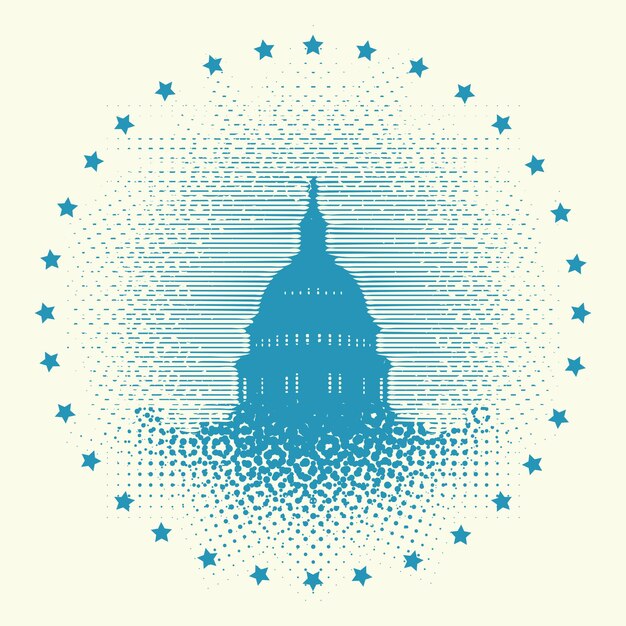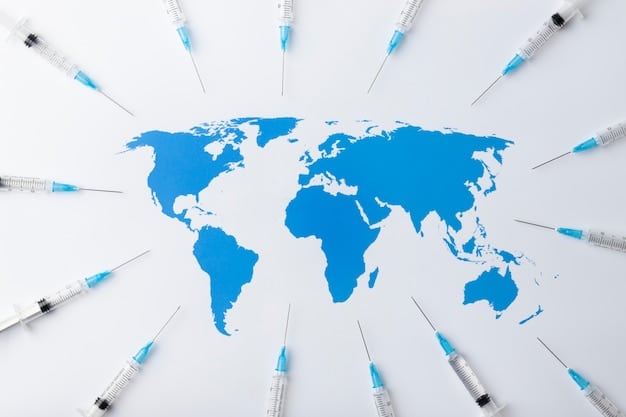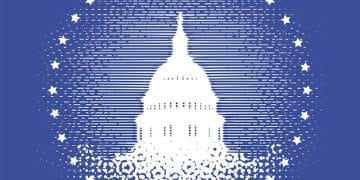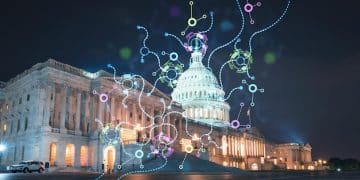US and WHO: Navigating Global Health Crises in 2025

Advertisements
The relationship between US and WHO (World Health Organization) has never been more vital. In 2025, the world is confronted with mounting health emergencies that demand strong leadership, cooperation, and a renewed commitment to protecting global communities.
This moment marks a turning point. With political shifts and evolving threats, the ability of international partners to coordinate effectively will define how resilient societies can become in the face of pandemics and crises.
Advertisements
Beyond policy and diplomacy, the stakes lie in lives saved, knowledge shared, and resources distributed fairly. The path ahead will determine whether global health stands divided or united when it matters most.
A Shifting Global Health Terrain in 2025
In 2025, the global health arena has become more intricate than ever.
Climate change is fueling outbreaks of vector-borne diseases such as dengue and malaria, while extreme weather events, floods, droughts, and heatwaves, are destroying vital health infrastructure and displacing vulnerable populations.
Advertisements
At the same time, geopolitical disputes and questions of sovereignty are shaping how nations approach cooperation. Within this turbulent backdrop, the partnership between US and WHO is under strain.
The United States is moving forward with its withdrawal, funding cuts are already in motion, and debates over the WHO’s authority are reshaping expectations for the future of collaboration.
Pandemic Preparedness: New Agreements, New Conflicts
In May 2025, the World Health Assembly adopted the historic WHO Pandemic Agreement, designed to strengthen collective prevention, preparedness, and response mechanisms.
The accord highlights equitable access to vaccines, diagnostics, and therapeutics, and introduces clearer rules for pathogen access and benefit sharing (PABS). Yet deep divisions remain between US and WHO.
In July, the United States rejected amendments to the International Health Regulations (IHR) adopted in 2024, arguing they would grant the WHO excessive authority over defining public health emergencies.
This rejection raises serious doubts about how global mechanisms can operate effectively without the full engagement of one of the world’s most powerful players.
The Rising Threat of Antimicrobial Resistance and Health Equity
Another urgent challenge underscoring the fragile ties between US and WHO is antimicrobial resistance (AMR). In 2025, the WHO expanded its global surveillance efforts, showing that overuse and misuse of antibiotics are accelerating the rise of “superbugs” resistant to treatments.
Projections warn that, without stronger action, AMR could kill millions annually by 2050 and cost the global economy trillions of dollars, with devastating consequences for both healthcare systems and productivity.
Health equity has also become central to the debate. Access to medicines, vaccines, diagnostics, and strong national health systems is far from evenly distributed.
With the US scaling back financial contributions and rejecting certain international frameworks, the WHO faces significant funding gaps.
Unless renewed strategies are forged, the most vulnerable countries may be left to face the brunt of future crises, making the relationship between US and WHO even more critical to global health resilience
US engagement with the WHO: historical context and future prospects
The relationship between the United States and the World Health Organization has been characterized by periods of robust partnership, occasional friction, and strategic re-evaluation.
Understanding this historical arc provides essential context for anticipating their interaction in 2025 and beyond.
From the WHO’s inception, the US played a significant role as a founding member and a major financial contributor. This early engagement reflected a shared vision for a healthier world, recognizing that disease knows no borders.
US expertise in medical research, public health infrastructure, and philanthropic endeavors often dovetailed with WHO’s global mandate.
This period saw joint efforts in eradicating smallpox, combating polio, and establishing global health surveillance systems. These successes demonstrated the power of multilateral cooperation in achieving ambitious public health goals.
More recently, the relationship has faced strains, particularly concerning funding priorities, organizational reform, and political differences. These tensions often emerge during times of crisis, where differing approaches to international governance and national interests come to the forefront.
The COVID-19 pandemic, for instance, highlighted disagreements over the WHO’s response, China’s transparency, and the effectiveness of international health regulations.
Such periods of tension, while challenging, also offer opportunities for recalibration and strengthening. They compel both the US and the WHO to critically examine their operational models, communication strategies, and the very nature of their partnership.
Strengthening global health security frameworks
The debate around global health security in 2025 has intensified as the world grapples with recurring outbreaks, antimicrobial resistance, and the impact of climate change on health systems.
The ability of nations to detect threats early, report them transparently, and coordinate responses effectively has never been more critical.
This is where the relationship between US and WHO becomes central, since their alignment or divergence directly influences how quickly the international community can act in times of crisis.
The strain created by the US decision to move forward with its withdrawal from the WHO has raised questions about whether existing frameworks can remain strong without the full engagement of one of the world’s leading health and scientific powers.
The importance of the International Health Regulations (IHR)
The International Health Regulations (IHR), first adopted in 2005, are the legally binding rules designed to help countries prevent and respond to cross-border health threats.
They require member states to notify the WHO of outbreaks, strengthen surveillance, and ensure coordinated action during emergencies. In 2024, significant amendments were passed to update these rules, incorporating new provisions on equity, financing, and data sharing.
These amendments will officially enter into force in 2025, aiming to create a more transparent and fair system for managing global health risks.
Yet, the path ahead is complicated. The United States has rejected some of these updates, arguing they undermine national sovereignty and give the WHO excessive authority in defining health emergencies.
This divergence highlights the fragility of compliance and reveals the central challenge of the IHR: their effectiveness depends entirely on the political will and capacity of member states.
While many nations see the new provisions as a chance to close equity gaps and strengthen preparedness, the tension between US and WHO underscores the difficulty of balancing global cooperation with national interests.

Closing gaps in emergency preparedness and response
The COVID-19 pandemic exposed critical deficiencies in global preparedness. Many countries, including high-income ones, struggled with essential supplies, diagnostic capacity, and coordinated public health messaging.
This highlighted the need for investment beyond national borders, reinforcing the global common good.
- Establishing global stockpiles of PPE and medical equipment.
- Developing standardized protocols for disease surveillance.
- Creating rapid response teams for deployment during outbreaks.
- Investing in public health infrastructure at the national level.
- Enhancing data sharing mechanisms and analytical capabilities.
Both the US and the WHO have recognized these gaps.
Discussions are underway regarding amendments to the IHR and the potential for a new pandemic treaty, aiming to create clearer obligations, enhance sharing of data and biological materials, and establish more equitable access to medical countermeasures.
These initiatives represent a concerted effort to build a more resilient global health system, capable of withstanding future shocks.
The pursuit of global health security is not merely an act of altruism; it is a fundamental component of national security and economic stability. By bolstering international frameworks, nations collectively fortify their defenses against health threats that inherently transcend borders.
Financing global health initiatives: US contributions and strategic investments
Adequate and predictable financing is the lifeblood of global health initiatives. The United States has historically been the largest single contributor to global health efforts, channeling funds through both the WHO and a myriad of bilateral programs.
The nature and direction of these investments in 2025 will be critical in shaping the future of global health.
Diverse funding streams and their impact
US contributions to global health are multifaceted, encompassing assessed contributions to the WHO, voluntary contributions to specific WHO programs, and significant bilateral aid through agencies like USAID, the President’s Emergency Plan for AIDS Relief (PEPFAR), and the President’s Malaria Initiative (PMI).
These investments have yielded remarkable successes, including dramatic reductions in HIV/AIDS, tuberculosis, and malaria mortality rates, and significant progress in maternal and child health.
Beyond infectious diseases, US funding also supports health system strengthening, research and development of new health technologies, and emergency humanitarian responses. This broad portfolio reflects a comprehensive approach to global health challenges.
Optimizing investments for maximum impact
As global health needs evolve, so too must the strategies for financing them. In 2025, there will be a strong emphasis on optimizing investments to achieve maximum impact and ensure sustainability.
This involves balancing direct aid with efforts to build local capacity and foster self-reliance in recipient countries. Discussions around “pandemic preparedness funding” and mechanisms for rapid financing during emergencies are high on the agenda.
The aim is to move away from reactive, crisis-driven funding towards proactive, sustained investment in foundational health capabilities.
The US role in these discussions will involve advocating for transparent financial governance, promoting efficient resource allocation, and encouraging other wealthy nations to increase their contributions.
The objective is to create a more resilient, equitably funded global health ecosystem capable of weathering future storms.
Strategic investments in global health are not merely expenditures; they are long-term commitments that yield significant returns in terms of human lives saved, economic stability, and enhanced international security.
The US, with its considerable resources and influence, plays an indispensable role in catalyzing these vital financial flows.
Addressing health inequities and strengthening health systems
The COVID-19 pandemic starkly illuminated existing health inequities, both within and between nations.
Bridging these gaps and strengthening health systems globally are paramount challenges, requiring sustained commitment and collaborative action from entities like the US and the WHO.
True global health security cannot be achieved while significant populations lack access to basic health services.
The persistent challenge of health disparities
Disparities in health outcomes are often rooted in socioeconomic determinants such as poverty, education, sanitation, and access to clean water.
These factors are compounded by systemic issues like fragile healthcare infrastructures, insufficient healthcare workforce, and inadequate supply chains, especially in low-income countries.
The global distribution of vaccines during the pandemic served as a sobering reminder of how historical inequities can hamstring crisis response.
Countries with fewer resources struggled to procure essential supplies, leading to prolonged outbreaks and disproportionate mortality rates.
Addressing these disparities requires a multi-pronged approach that goes beyond simply providing aid. It involves empowering local communities, investing in health education, and advocating for policies that promote social justice and equitable resource distribution.
Building resilient primary healthcare infrastructures
A strong primary healthcare system is the bedrock of national health security. It serves as the first line of defense against disease, provides essential routine services, and acts as the foundation for effective outbreak response.
Many countries, however, lack the resources and expertise to build and maintain such robust systems.
- Training and retaining healthcare workers in underserved areas.
- Ensuring equitable access to essential medicines and technologies.
- Implementing digital health solutions for improved data collection and service delivery.
- Integrating community health workers into formal healthcare structures.

The US and the WHO can play a pivotal role in this endeavor. The US, through bilateral programs and contributions to global funds, can provide financial and technical assistance.
The WHO, with its normative and technical expertise, can provide guidance, develop standards, and facilitate knowledge exchange between countries.
Their combined efforts are essential to nurturing health systems that are not only resilient but also equitable, capable of serving all populations, especially the most vulnerable.
Investing in primary healthcare and addressing health inequities represent commitments to long-term sustainable development. These are not merely humanitarian gestures but strategic imperatives that bolster global stability and prosperity.
Future challenges and opportunities for collaboration
As 2025 approaches, the landscape of global health is continuously evolving, presenting both new challenges and unprecedented opportunities for enhanced collaboration between the US and the World Health Organization.
Navigating this dynamic environment will require foresight, flexibility, and a renewed commitment to multilateralism.
Beyond traditional infectious diseases and climate change impacts, novel health threats are emerging.
These include the psychological burden of successive crises, the rise of misinformation and disinformation undermining public health efforts, and the complex ethical considerations surrounding new biotechnologies.
Addressing these multifaceted challenges demands coordinated research, robust public communication strategies, and the development of international ethical guidelines.
A significant shared priority will be investing in “one health” approaches, recognizing the interconnectedness of human, animal, and environmental health.
Surveillance systems for zoonotic diseases, for instance, need to integrate insights from veterinary and ecological sciences to prevent future spillover events.
Furthermore, the long-term health consequences of the COVID-19 pandemic, including “long COVID” and its impact on healthcare systems and economies, will require sustained attention and collaborative research efforts.
Leveraging technology and innovation for global health equity
Technological advancements offer immense opportunities for transforming global health.
Artificial intelligence, telemedicine, rapid diagnostics, and genomics can revolutionize disease surveillance, drug discovery, and healthcare delivery, particularly in remote or underserved areas.
The challenge, however, is to ensure that these innovations benefit all, avoiding a deepening of the digital health divide.
Collaboration between the US and the WHO can facilitate the equitable transfer of technology and expertise, promote open-source solutions, and advocate for policies that ensure affordability and accessibility of new medical products.
This includes supporting the development of local manufacturing capabilities and strengthening regulatory frameworks in low- and middle-income countries.
The potential for leveraging technology to enhance health literacy, combat misinformation, and empower individuals to take greater charge of their health is enormous.
Such initiatives will require not only technological solutions but also cultural sensitivity and strong community engagement.
The path forward for the US and the WHO in 2025 is one of critical collaboration. By focusing on shared priorities, adapting to emerging threats, and harnessing the power of innovation, they can collectively build a more resilient, equitable, and healthier world for all.
| Key Point | Brief Description |
|---|---|
| 🌍 Global Health Threats | Ongoing pandemics, climate change, and AMR demand coordinated international action. |
| 🤝 US-WHO Relationship | A pivotal partnership, historically strong but facing recent re-evaluation for future collaboration. |
| 🛡️ Health Security Frameworks | Strengthening IHR and emergency response to close preparedness gaps. |
| 💲 Strategic Funding | US investments are crucial for global health initiatives, focusing on impact and sustainability. |
Frequently asked questions
In 2025, key global health challenges include persistent pandemic threats, the worsening health impacts of climate change, the escalating problem of antimicrobial resistance (AMR), and the pervasive issue of health inequities worldwide. These require integrated and collaborative solutions.
The relationship has seen fluctuations, including robust collaboration during past outbreaks and periods of tension, particularly during COVID-19 concerning funding and the WHO’s response. However, there’s a recognized mutual dependency for effective global health governance.
The International Health Regulations (IHR) remain the foundational legal framework for global health security, guiding countries on preventing and responding to public health risks. Efforts in 2025 will focus on strengthening their implementation and considering amendments for future pandemics.
As the largest single contributor, US financing significantly underpins various global health initiatives, from pandemic preparedness to specific disease programs like PEPFAR. Its strategic investments are vital for operational capacity and achieving global health objectives.
Strong, equitable health systems are essential for resilience against all health threats. Addressing inequities ensures that all populations, especially the vulnerable, have access to necessary care, preventing disproportionate impacts during crises and fostering sustainable development.
Conclusion: Charting a collaborative course
The year 2025 represents a critical juncture for global health, demanding a recalibrated and reinforced partnership between the United States and the World Health Organization.
The persistent threat of pandemics, the undeniable impacts of climate change on health, and the imperative to address deep-seated inequities necessitate a collaborative approach that transcends political differences and national borders.
By prioritizing strategic financing, strengthening international health regulations, and building resilient health systems, both entities can forge a more secure and equitable global health future.
The lessons of the past underscore a simple truth: no nation can tackle these challenges alone. A robust, effective, and ethically guided collaboration between the US and the WHO is not merely desirable; it is essential for the health and stability of the world.





